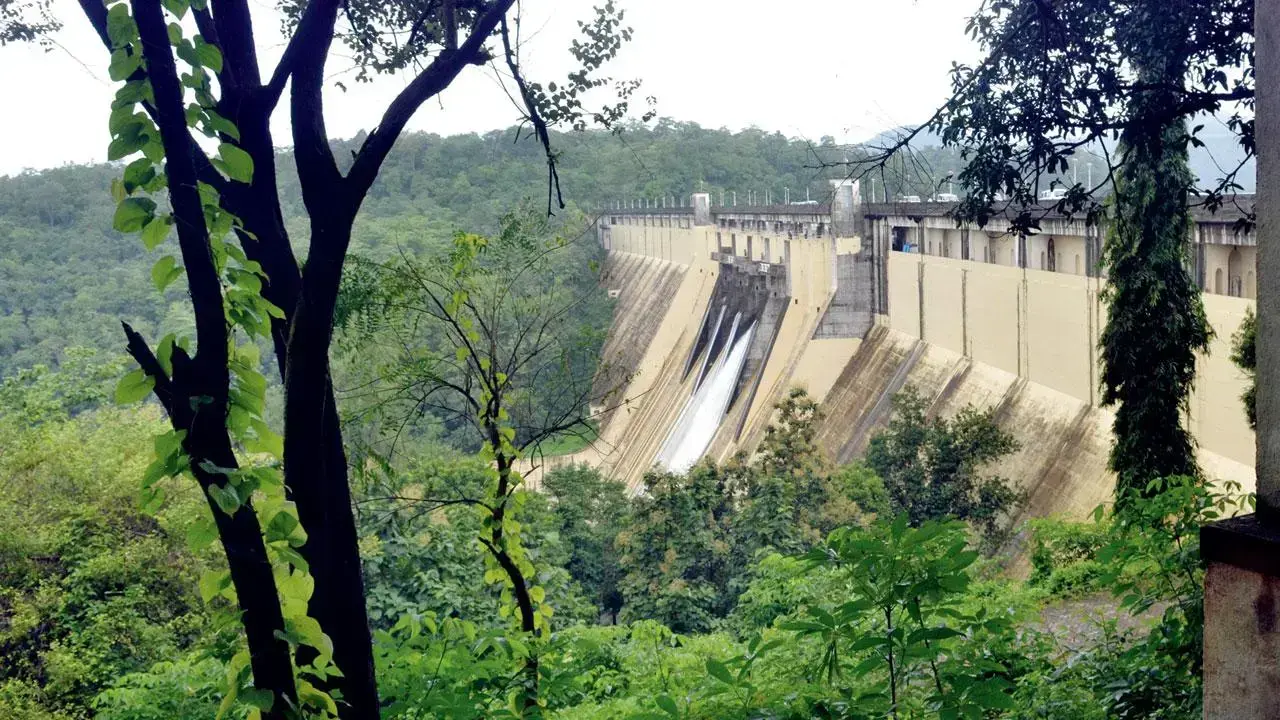As per the data recorded at 10 am on Wednesday, the water level of the Panchganga at Rajaram weir reached 42.2 feet, which is 8 inches below the danger mark of 43 feet

File Pic
Amid heavy rains in Kolhapur district of western Maharashtra, the Panchganga river is flowing just a few inches below the danger mark on Wednesday, reported PTI citing officials.
As per the data recorded at 10 am on Wednesday, the water level of the Panchganga at Rajaram weir reached 42.2 feet, which is 8 inches below the danger mark of 43 feet, they said.
The water level of the Radhanagari dam in the district has increased to 92 per cent, said the PTI report. The water storage of the dam is 7.71 TMC and water is being released at the rate of 1,500 cusecs from the dam, a district official said reported PTI.
As a result of good rainfall, a total of 81 barrages in the district are submerged under water, he said.
Inflow into the Almatti dam (in north Karnataka) has increased due to adequate rain in the catchment areas of the Krishna river. Outflow from there will be gradually increased from the present 1,70,000 cusec to 2,00,000 cusec on Wednesday, the official added
In Pune district, water is being released at the rate of 9,400 cusec from the Khadakwasla dam after heavy rainfall in the catchment areas, reported PTI. Those living in low-lying areas have been cautioned by district administration to remain alert.
The India Meteorological Department (IMD) has issued an orange alert for the 'ghat' (mountain pass) sections in Pune district. An orange alert signifies a preparedness advisory for authorities due to the potential for severe weather conditions.
Meanwhile, in Mumbai, the collective lake levels in the seven reservoirs that supply drinking water to the city are now at 58 per cent, as per the BMC data.
According to the Brihanmumbai Municipal Corporation (BMC) data, on Wednesday, the collective lake levels or water stock in Mumbai lakes is now at 8,41,396 million litres of water or 58.13 per cent.
Mumbai draws water from Tulsi, Tansa, Vihar, Bhatsa, Modak Sagar, Upper Vaitarna, and Middle Vaitarna.
As per the data shared by the civic body, the water level in Tansa is at 96.26 per cent. At Modak-Sagar, 82.98 per cent of water stock is available.
In Middle Vaitarna 53.01 per cent, Upper Vaitarna 25.40 per cent, Bhatsa 55.88 per cent, Vehar 93.14 per cent and Tulsi 100 per cent of useful water level is available.
Tulsi Lake, one of two lakes that supplies water to the Brihanmumbai Municipal Corporation (BMC) area, began overflowing at 8:30 am today. This is a replay of last year's occurrence, when the lake began overflowing on July 20, 2023, at 1:28 pm, said the civic agency in a communique.
Tulsi Lake, built in 1879 at Rs 40 lakh, is the smallest of the lakes that provide water to Mumbai. The lake has a useful water storage capacity of 804.6 crore litres (8046 million litres) and provides an average of 18 million litres (1.8 crore litres) of water each day. The lake is roughly 35 km from the BMC headquarters.
"The 'Tulsi lake' of the Brihanmumbai Municipal Corporation (BMC), one of the two lakes that supply water to the Brihanmumbai Municipal Corporation area and are located within the BMC area, has started overflowing at 8:30 am today, July 20, 2024. Last year also, on July 20, 2023, itself, the lake had started overflowing at around 1.28 pm," BMC said in its statement.
 Subscribe today by clicking the link and stay updated with the latest news!" Click here!
Subscribe today by clicking the link and stay updated with the latest news!" Click here!










